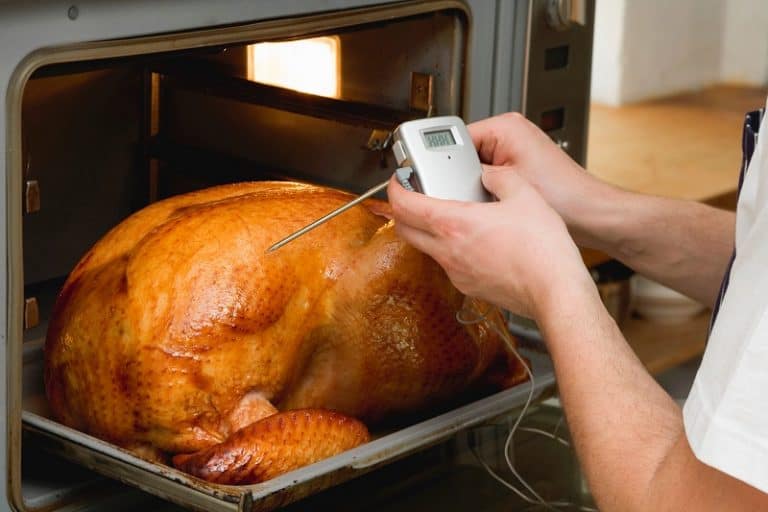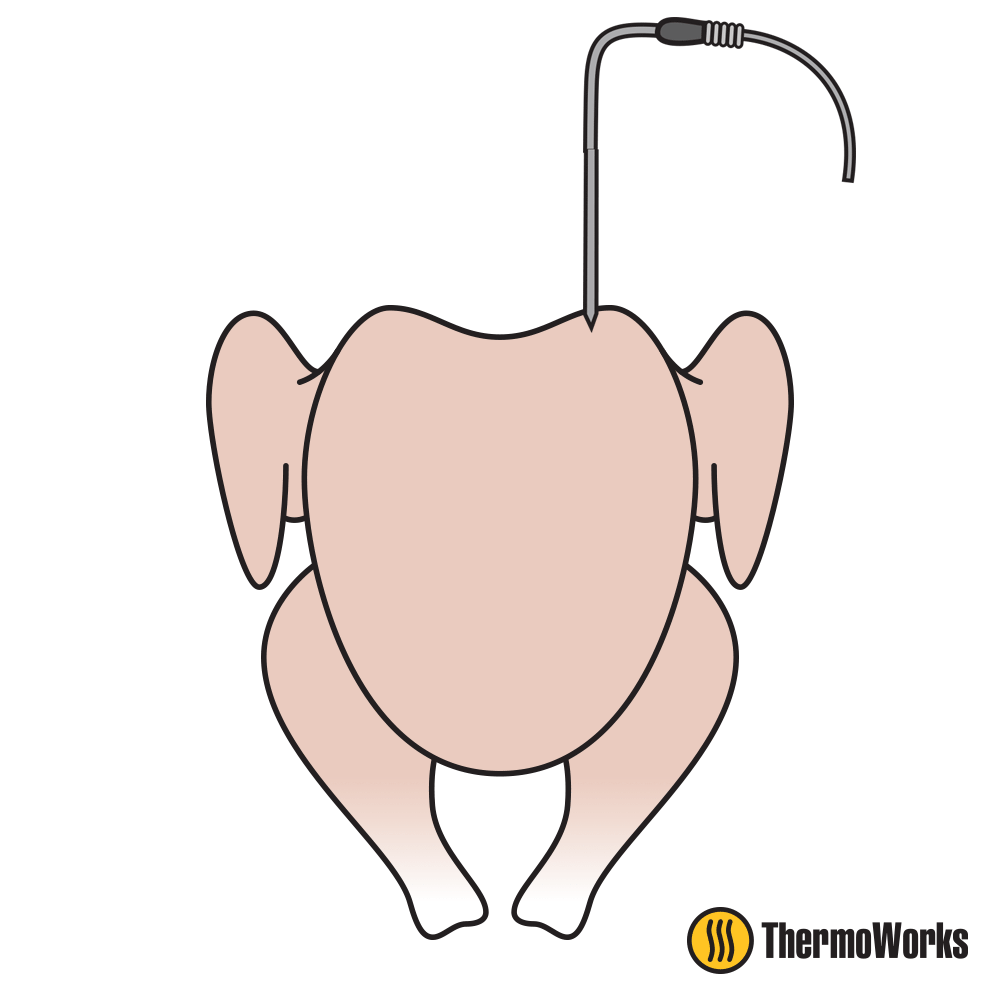Thanksgiving is one of the most food-centered days of the year, and just about the only time for a Turkey to shine. In this post, we’ll help you with one of the key principles of turkey cooking that you need to get a perfect bird this year!
While you can find any number of turkey recipes with varying methods and flavors they all have one thing in common: making sure your turkey is properly cooked. And the thermal principles that we talk about here for cooking your turkey are applicable to any recipe.
As Thanksgiving approaches, preparing the perfect turkey is on everyone’s mind. One of the best ways to ensure your turkey is cooked properly is to use a meat thermometer. But where exactly should you put the thermometer?
Why Use a Meat Thermometer?
Using a meat thermometer is the only way to accurately determine if your turkey is fully cooked, Appearance and cooking times alone won’t tell you if your turkey is safe to eat The USDA recommends cooking turkey to an internal temperature of 165°F to kill any harmful bacteria The best way to know you’ve hit that temperature is to use a thermometer,
Thermometer Placement
Proper placement of the thermometer is key for an accurate reading. There are a few different options for where to insert the thermometer probe:
- Inner thigh: Insert the thermometer probe into the innermost part of the thigh, taking care to avoid touching the bone. The thigh is the thickest part of the turkey so it will take the longest to cook.
- Breast: For an oven-safe thermometer, insert it into the thickest part of the breast before roasting. For an instant-read thermometer, insert it into the thickest area of the breast after cooking.
- Wing: Check the inner wing area with an instant-read thermometer after roasting.
For whole turkeys, you’ll want to check the temperature in all three spots – thigh, breast and wing. That will ensure no part of the turkey is undercooked.
Instant-Read vs Oven-Safe
The type of thermometer you use will impact placement. Here’s the difference between the two main options:
- Instant-read thermometer: This type of thermometer isn’t designed to stay in the oven. It provides a quick, accurate reading when inserted into the turkey after cooking.
- Oven-safe thermometer: Also called a “leave-in” thermometer, this style has a probe that stays in the meat while it cooks. It allows you to monitor the temperature without continually opening the oven.
An oven-safe thermometer can only be placed before cooking. An instant-read thermometer is used to check multiple areas after roasting. Many cooks use both for the most foolproof results!
Steps for Inserting a Thermometer
- Wash the thermometer probe with soap and water before using.
- For oven-safe thermometers, insert the probe into the thickest part of the thigh before placing the turkey in the oven.
- For instant-read thermometers, choose your desired monitoring areas – thigh, breast and inner wing work well.
- Once the turkey is fully cooked, remove it from the oven and let rest 15-20 minutes. This allows the juices to redistribute for accurate temp readings. Insert the instant-read thermometer probe into each area, taking care not to hit bone.
- Verify the temperatures have hit 165°F. If not, continue cooking until the proper internal temperature is reached.
- Once you’re finished, wash the thermometer probe thoroughly before storage.
Common Thermometer Issues
To ensure thermometer accuracy. avoid these common mistakes
- Placing the probe near bones or fatty areas. This can give an inaccurate high reading.
- Leaving the probe in one area for too long. It’s best to insert, take a quick reading, and remove.
- Forgetting to wash the probe between uses. This risks cross-contamination.
- Not calibrating oven or leave-in thermometers occasionally. They can lose accuracy over time.
- Buying cheap thermometers. Spending a little more means better performance and durability.
Turkey Doneness Signs
While thermometers are best there are visual cues that turkey is fully cooked
- 165°F internal temperature
- Meat is opaque throughout
- Juices run clear with no pink color
- Leg joints move easily
- Meat pulls away from the bone cleanly
However, these signs alone aren’t foolproof. Always use a thermometer for safety!
Enjoy Perfectly Cooked Turkey
By inserting your thermometer probe into multiple areas – especially the thigh, breast and inner wing – you can guarantee your turkey reaches the proper internal temperature. Stay away from bones or fatty spots for the most accurate results.
A leave-in oven thermometer provides ongoing temp monitoring. An instant-read thermometer lets you quickly check multiple areas after cooking. Or use both for extra assurance! Proper use of a high-quality turkey thermometer means you’ll serve up juicy, delicious turkey every time.

How to Place the Probe
 Insert the probe horizontally, from near the neck cavity.
Insert the probe horizontally, from near the neck cavity.- The probe’s tip should be about 1/2 to 1 inch (1.3 to 2.5 cm) from the internal cavity of the bird to avoid touching the bone.
With the probe in place, you’re ready to track the breast’s internal temperature during the cook. Remember that breast and leg meat should cook to different temperatures, but breast is the one that will dry out if overcooked. So make sure you temp that breast! If you want to learn more about how white and dark meat differ, read about it in our comprehensive turkey post.
To Place your Probe Correctly, Understand 3 Things:
Heat moves. Sounds obvious right? Maybe not. Because of the way that heat is transferred through substances, the outside of a turkey will be at a higher temperature than the inside. This difference in temperature between the exterior and interior of the meat is called a temperature gradient.
Understanding temperature gradients leads to understanding proper probe placement: the thermal center.
How to Insert a Meat Thermometer into Turkey
FAQ
Is turkey done at 165 or 180?
Where is the best place to check the temperature of a turkey?
